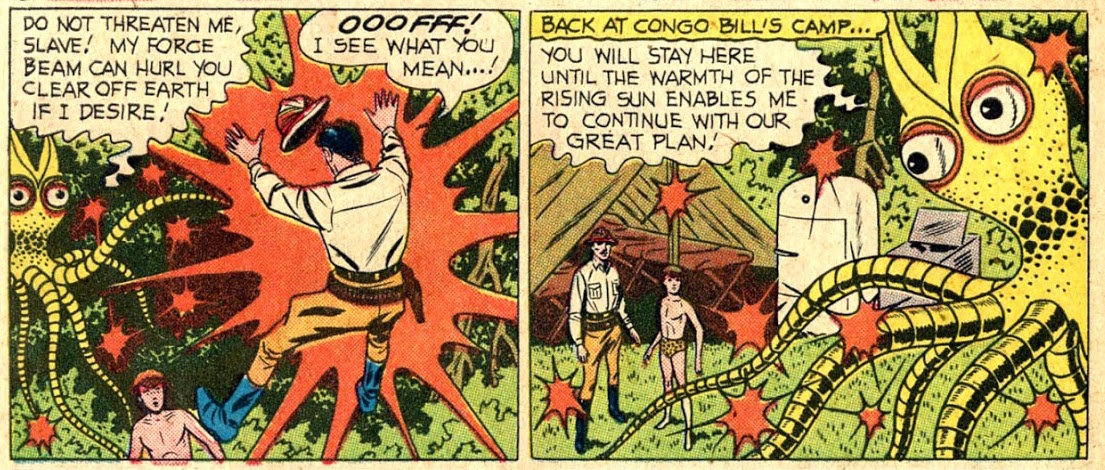« — I don’t know about zombies, doctor. Just what is a zombie?
— A ghost. A living dead. It’s also a drink. » — I Walked With a Zombie (1943)
Has any of the classic monsters undergone more radical changes over the past century than the lowly zombie? I believe my first encounter with the walking dead (in comics, that is) came through a reprint of a relatively obscure Archie Goodwin – Rocco Mastroserio story, the imaginatively titled Zombies!* (read it here!) from Creepy no. 17 (Oct. 1967, Warren); in it, uncle Archie schooled me about zombies’ aversion to salt and, it follows, sea water. Which I presume is what kept them cooped up on tropical islands.
Confirmation of this vulnerability came in what I consider the scariest scene in the uneven Kolchak: The Night Stalker TV series, from its second episode, the imaginatively titled The Zombie, wherein Kolchak does his level best, under trying circumstances, to pour salt down the throat of a massive, dormant-but-not-for-long zombie.
But the damage to zomboid tradition had already been inflicted, for better (my vote) or for worse, by George Romero‘s ravenous shamblers in 1968’s Night of the Living Dead. While I had no trouble accepting Romero’s savvy upgrade, I recall being offended by the cheesy, mindless, anything-goes approach adopted by Lucio Fulci in his imaginatively titled Zombie**, namely this sequence.
Marvel’s resident Zombie, Simon Garth, had débuted all the way back in 1953 (what is time, after all, to the living dead?) and Menace no. 5‘s imaginatively titled Zombie! (check it out here).
Aside from his Bill Everett-drawn premiere, I frankly have little use for the character, but I have a soft spot for this one story, intended as a time-buying fill-in for the feature’s regular team, writer Steve Gerber and Peruvian artist Pablo Marcos. It’s written by the often-interesting Doug Moench (Master of Kung Fu, Moon Knight) and illustrated by the masterful Alfredo Alcala, a sure consensus favourite around here. The plot itself is rather on the thin side, being one of those Agatha Christie’s Ten Little… er — And Then There Were None scenarios, with Garth mindlessly hovering around and peering in windows, until…
But the artwork is a delight. Like all of Marvel’s supernatural antiheroes (save the Man-Thing), Garth absurdly boasts the physique of a bodybuilder (despite being long dead and not eating anything), but at least Alcala truly knows his anatomy.
The original story is over thirty pages long, so I’m just providing highlights, including the conclusion, which is quite cute. While it must be incredibly hard to write mindless, invulnerable characters, Moench had a good punchline in mind all along.









-RG
*set in Brazil for the sake of the twist ending — not a bad one, either.
**To be fair, called Zombi 2 in Italy, since “Romero’s Dawn of the Dead (1978) was released in Italy as Zombi.” At least the Italians, as the French once did, understand that Zombi is the male, and Zombie the female of the, er… species. Or is it simply the plural?





































































